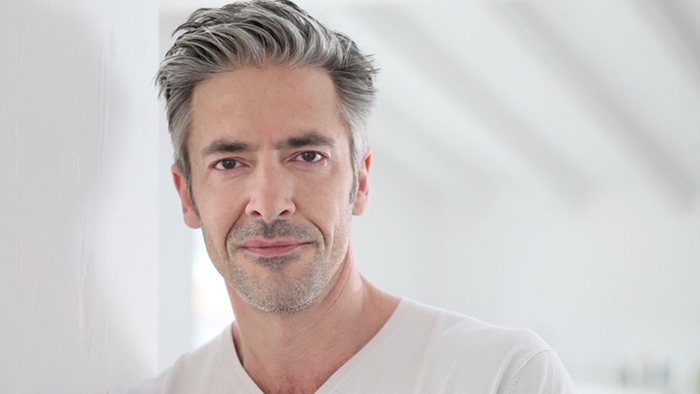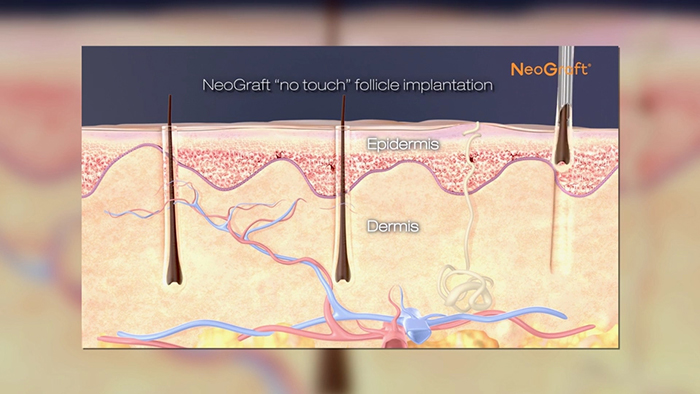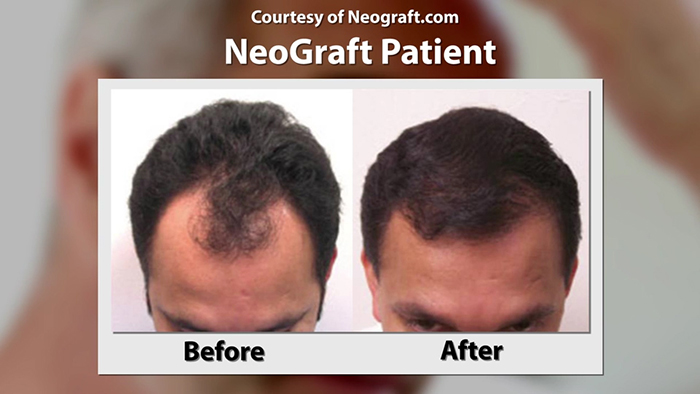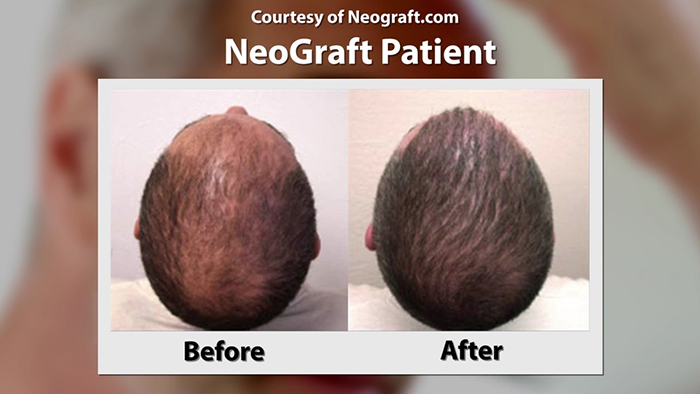Hair loss and thinning hair is practically an epidemic. In fact, approximately 50 million men and about 30 million women in the United States alone suffer from male/female pattern baldness or thinning hair, according to the American Academy of Dermatology (AAD).
Until now, hair transplantation techniques have left much to be desired. According to Dr. Mark Pinsky of Florida, there is an FDA-approved technology called NeoGraft that has changed hair transplantation dramatically.
“With NeoGraft we can now create natural looking hairlines with lush, fuller hair that makes it virtually undetectable from any hair grafting restoration that has been done.” – Mark Pinsky, MD
Superceding Traditional Hair Transplantation
NeoGraft’s minimally-invasive hair transplant procedure is a much more desirable option for both men and women as opposed to traditional hair restoration methods. With previously used manual extraction instruments, large clumps of hair were transplanted in strips, which made the results quite obvious. “The corn rows and plugs of yesterday no longer hold true today,” says Pinsky. “This new technology creates exceptionally natural hairlines. For the first time we can extract follicular hair units without unsightly horizontal scars in the back of scalp.”
The key with hair transplantation now and yesterday – and the reason why plastic surgeons are involved with the procedure – is the need for an experienced surgeon. NeoGraft provides the means for expert surgeons to take their own skill and have a better tool; NeoGraft on it’s own is not what creates great results. It’s the skill of the surgeon utilizing a better tool and procedure. If prior procedures can be considered crude, then NeoGraft is more state-of-the-art.
A Hair Replacement Solution like No Other
NeoGraft is an automated hair transplant system which facilitates the harvesting of follicles, described as a Follicular Unit Extraction (FUE). It dramatically improves the accuracy and speed of the procedure and works as a natural extension of the surgeons’ hand – no pulling or twisting.
Pinsky is especially excited about the artistic license this affords him for each patient. “It takes a keen sense of artistry to create the proper orientation and direction of each follicular unit versus just grafting a clump of hair,” he explains. “The hair looks healthier, richer and fuller than when we transplant strips of hair.”
Pinsky also makes the point that men in particular desire discretion when committing to cosmetic surgery procedures. “Especially when considering a hair transplant, [men hope that] their procedures be done in such a manner that no one can tell. We want things to be done as discreetly as possible and not overdone. Now with NeoGraft, hair transplantation can be discreet, delivering natural, fuller, healthier looking hair and it’s virtually impossible to tell anything was ‘done’ at all.”
The Science behind FUE
Follicular Unit Extraction simply means that each follicle is removed individually, rather than a strip of hair with many, many follicles to be placed together. With FUE, the follicles are taken from the scalp in the back of the head where hair tends to always grow, even for those facing balding. The follicles that hold your transplanted hair are living tissues that grow cyclically. Once the healthy hair follicle has been implanted into the balding area, the grafted hair will stay in place for about two to three weeks before shedding – this is normal and an important part of the new growth process. After shedding, the new growth will begin in 3-4 months and your hair will continue to grow normally.
Dr. Pinsky emphasizes the importance of NeoGraft’s harvesting technique. “Because we are transplanting follicular units, the whole apparatus around the hair is saved. Each follicle is below the scalp with one to four hairs in it. Harvesting is possible through a beautifully designed hand piece that takes less than a millimeter, so the donor site has no evidence of where the extraction was made.”
Who is a Candidate?
Candidates for hair restoration surgery are those individuals in good health with moderate hair loss and sufficient donor hair on the back of the scalp to transplant into the balding areas. Those with more donor hair, greater hair density, and fullness can typically expect fuller results. Even people with curly hair, who were once thought to be more difficult to treat, can benefit from NeoGraft.
Dr. Pinsky adds that age poses no barrier to being a good candidate, but earlier might be better. “Men who begin to lose their hair at a young age often feel a blow to their ego and self-confidence; for some it is devastating. It’s best if you start early, but you don’t have to start early. Once word gets out that there is a safe, effective FDA-approved mechanism to restore a natural-looking hairline, more men will want to investigate the option of this procedure.”
What to Expect when you Schedule Hair Restoration
According to Dr. Pinsky, this is an in-office procedure and does not require sedation. “It’s not painful and men can get back to work in a couple days. Using the specially designed hand-piece, we precisely and meticulously extract each follicular unit from the back and sides of the scalp then artistically ‘graft’ them where hair is thinning to create natural hairlines and fuller looking scalp.”
The short recovery is a distinct benefit of the NeoGraft procedure. Normal activities can be resumed in a few days, and there are no staples, stitches or large scars to worry about. Surgeon’s prescribe simple post-op care that involves gentle washing of the hair and applying ointment. Patients must be careful when styling their hair in the early recovery period.
Does it last? Pinsky is convinced it does. “Hair survives around the temples and the back of the head. When you take hair from those areas and transplant it, it behaves as it did from the donor site. In other words, a long time.”
Silver Bullets on the NeoGraft Procedure
- It’s a minimally-invasive procedure for hair restoration; no stitches or staples
- There is little-to-no discomfort; no scalpel is involved
- The recovery time is quick; patients resume normal activity after only a few days
- The hair line is natural-looking; no large, linear scar
- Financing programs are available; many physicians have options to meet their patients’ hair transplant budgets
The Future of Hair Transplantation?
“Hair transplantation surgery has been available for decades,” explains Pinsky, “but never before did we have access to a technology like NeoGraft where we can discreetly take hair follicular units and transplant them in such a manner so as to make both the donor and recipient site as discreet as possible.” This technology is truly innovative and has the potential to upend prior hair transplantation options, providing a serious solution to the serious problem many women and men face with premature and/or genetic hair-loss.


















Facebook
Twitter
Instagram
YouTube
RSS